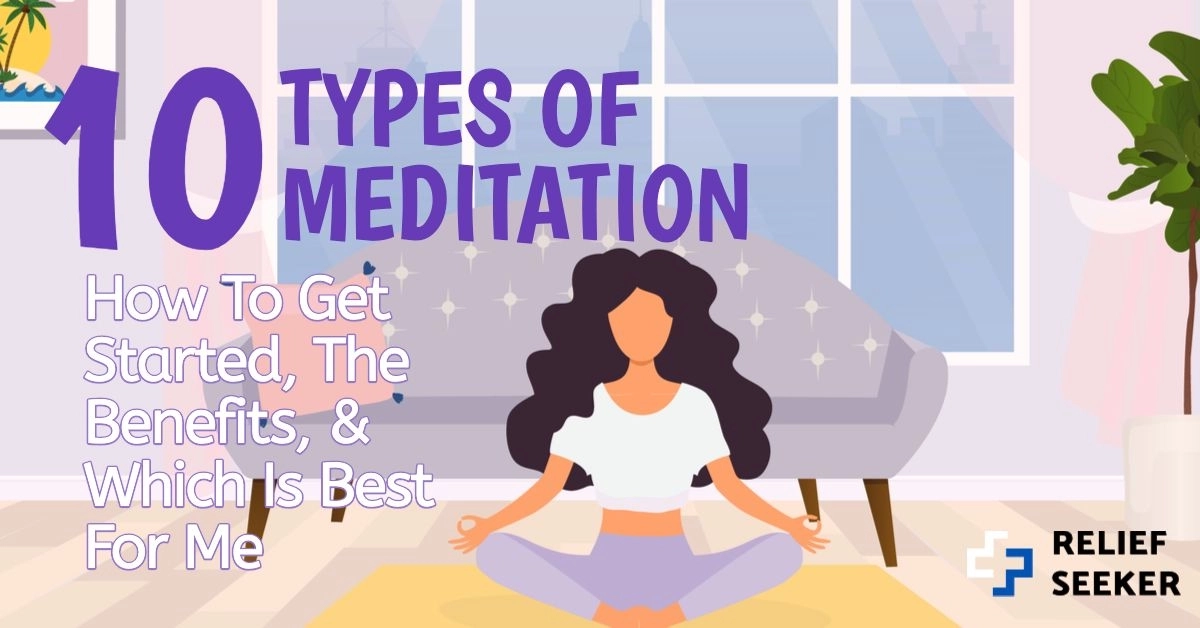Have you ever wanted to take a stab at meditating but didn’t know where to start? Yes! Well, you’re in luck! We’ve done a bunch of work for you that may be helpful to get started on your journey to mindfulness.
Meditation Explained
Meditation is a practice where a person, usually an individual, focuses their mind on a particular object, thought, or activity to train their attention and awareness to achieve a mentally clear, emotionally calm, and stable state of mind. Meditation has been around a long (long, long, long) time. The oldest documented evidence of the practice has been seen on wall art throughout India, dating back to 5,000 to 3,500 BC, which shows people seated in meditative poses.
The idea of meditating seems simple, right? Sit down, be still, focus your breath, calm your mind, then reflect. Even though meditating started as a religious practice in the faraway lands of India, Egypt, Thailand, and Tibet, it's become more like the practice of yoga; very posh, being less about faith and more about its healing benefits of finding awareness and achieving inner peace.
With 2020 throwing us all on a crazy rollercoaster that we never wanted to be on in the first place, we now have an increased need to reduce our anxiety and stress levels. Well, meditation might just be the golden ticket we’ve been looking for.
Types of Meditation
It is essential to know that there isn’t a right or wrong way to meditate, but finding a comfortable practice, meets your needs, compliments your personality, and helps you achieve your goals is what matters most.
There are many types of meditation practices, and today, we’ll go through the ten most popular.
Top 10 types of meditation practices (these are in no particular order):
Beginner’s meditation
Spiritual meditation
Mindfulness meditation
Visualization meditation
Focused meditation
Mantra meditation
Loving-kindness meditation
Movement meditation
Progressive relaxation
Transcendental meditation
Choosing which style or styles that best suit you is as easy as living in the moment and the breath. Please know that not all meditation styles are right for everyone. Each technique requires different skills and the right mindset.
So, which is best for you? Read on to learn more about the various types of meditation, their benefits, and which is best for you.
Beginner’s Meditation
This is the most basic and easiest way to launch yourself into the practice without worrying about the more complicated techniques. Beginner’s meditation will help you become more acquainted with your breath and emphasize the importance of having a clear mind and conscience.
The basics of beginner’s meditation are:
Sit or lie down
Close your eyes
Breath in and out without trying to regulate your breath
Pay attention to the sensation of your breathing, focusing on the rise and fall of your abdomen, chest, shoulders, and the airflow through your nostrils.
When your mind starts to wander, return your focus to your breath
Try to do this for three minutes each day and gradually increase the time as you become more comfortable with the practice.
Spiritual Meditation
Spiritual meditation was first practiced in Eastern religions like Hinduism, Daoism, and some forms of Christianity. This type of meditation is very similar to prayer, where you reflect mostly on the silence surrounding you so you can more deeply connect with your specific God or the Universe. During spiritual meditation, essential oils are commonly used to increase spiritual experience.
Some of the popular oils used are:
Palo Santo
Frankincense
Cedar
Sandalwood
Sage
Myrrh
Spiritual meditation is most commonly practiced at home or in your place of worship. It is best suited for people who thrive in silence and seek increased spiritual growth.
Mindfulness Meditation
Originating from Buddhist teachings, mindfulness meditation is the most popular type of mediation in Western cultures and the U.S.
The goal is to pay attention to your thoughts during mindfulness meditation as they pass through your mind. You are encouraged not to judge the thoughts or become too involved with them and just let them flow freely while taking note of any patterns that might arise.
During this practice, it helps to focus on a specific object or simply on your breath as you observe your body's sensations, feelings, or thoughts. This practice combines awareness and concentration and is suited for just about everyone and is especially good for those who don’t have someone guiding them. Mindfulness meditation can be practiced anywhere you can find a quiet spot and is easily practiced alone.
Visualization Meditation
If you’ve ever created a vision board, this type of meditation could be for you. Visualization meditation combines the focus of enhancing feelings of relaxation, peace, and calmness with visualizations of things that make you happy or feel joy, such as positive scenes or images. This practice helps you create an idyllic state of being. It is crucial to vividly imagine the positive scene during your practice and use all five senses to enhance the detail as much as possible.
Another way to practice this form of meditation is to imagine yourself succeeding at a specific goal. For example, if you’ve been working hard for a promotion at work, you would focus all your energy on your boss telling you that you’ve earned a raise. This type of focus is intended to increase your motivation.
Visualization meditation is best for those wanting to boost their moods, promote peach within, and reduce stress levels.
Focused Meditation
Focused meditation involves just that, focus as you concentrate using any of the five senses. During focused meditation, you can focus on something internal, like your breath, or if it’s more comfortable, you can focus on external objects or influences such as a necklace, candle, or listen to the beat of a drum.
This practice sounds simple, but it’s said to be quite tricky for beginners, as those just starting often have difficulty sitting still for long periods, but if you’re looking for added focus in your life, this type might be right for you. It is important to remind yourself that it’s ok to start slowly with a couple of minutes a day, working up to several minutes.
Mantra Meditation
Most commonly used in Hindu and Buddhist teachings, this type of meditation uses a repetitive sound intending to clear the mind. It can be a sound, phrase, or word, such as the popular “Ohm.”
The most important thing to remember while practicing mantra meditation is that it doesn’t matter if your mantra is spoken loudly or is whispered, as long as you’re focused while chanting. This will increase your alertness for you to be more tuned in to your surroundings, allowing you to experience more profound awareness.
This type of meditation is best for people that don’t necessarily enjoy sitting in silence. Many people find mantra meditation one of the easiest types of meditation because you’re focusing on something specific, like a bell ringing.
Loving-kindness Meditation
Loving-kindness meditation is used to strengthen the feelings of acceptance, kindness, and compassion toward others and yourself. It involves opening your mind and heart to receive love from others, then sending thoughtful internal wishes to those you love, including friends, family, and all living things.
This type of meditation is meant to promote compassion and kindness from within and is usually ideal for those wanting to let go of negative feelings of anger, resentment, guilt, or shame.
Movement Meditation
Some say this form of meditation is more like yoga as it involves moving while focusing on breathing, but instead of being in one place doing different stretches, you’re actually on the go while practicing. Movement meditation is an active form of meditation where the movement takes you on a journey and guides you through your thoughts. It can include taking a walk, gardening, or some other form of gentle motion.
Movement meditation can be practiced anywhere you feel connected with your breath while on the go and is best for people resistant to the more traditional (still and silent) practices. Many people say they enjoy movement meditation if they find peace while being active or prefer to let their minds wander rather than focusing on one specific thought.
Progressive Relaxation
If you’re looking to wind down from the day before crawling into bed or simply need an excuse to relax more, progressive meditation could be for you. This type of meditation is practiced by slowly tightening and relaxing one group of muscles throughout the body at one time. It encourages complete relaxation by reducing the body’s tension. During this type of meditation, you are asked to lie on the floor, look up at the ceiling, and imagine a gentle wave flowing through your body, releasing any tension the day might have brought you.
Progressive relaxation is suitable for everyone, especially for those that lead high-stress lifestyles. It can be practiced anywhere that’s comfortable for you to lie down so you can focus on washing away the day’s stressors.
Transcendental Meditation
As one of the more popular types of meditation, this form is the most challenging and time-consuming. It involves a person sitting still for at least 20 minutes, two times a day, generally in the morning and early evening. Transcendental meditation (TM) is practiced with a certified instructor using a mantra or series of specific words to the person and instructor practicing. TM is highly regarded among the scientific community and has been the subject of many studies in the last two decades for its many benefits, including reduced anxiety, lowered blood pressure, and stress from post-traumatic stress disorder (PTSD).
TM is best for those that enjoy structure in their practice and are serious about incorporating and maintaining a meditation practice in their day-to-day lives.
Benefits of Meditation
Regardless of the meditation type you’re looking to begin practicing, there are countless benefits. The National Library of Medicine and the Mayo Clinic have conducted many research trials proving meditation beneficial for many ailments and health-related conditions.
Some of the benefits of meditation include:
Increased tolerance to day-to-day ongoings
Reduced negative emotions
Lower blood pressure
Reduced anxiety
Improves sleep
Decreases pain, including chronic pain
Eases symptoms of depression
Alleviates symptoms of ADHD
Some benefits are scientifically proven and others anecdotal, but those who practice meditation daily have said they are convinced of the benefits in their day-to-day lives.
How to Get Started Meditating
Once you’ve decided on the type of meditation that works for you, the easiest way to start is to sit quietly while focusing on your breath. It’s best to start in small increments of time, even if it’s only for a minute or two, then increase the amount gradually as you become more comfortable with the practice.
Another way to get started is by downloading a meditation app on your smartphone. We’ve done some of the heavy lifting for you, and you can check out a bunch that we’ve reviewed and pre-vetted here. Meditation apps offer users an easy way to start their meditation journey by providing guidance on unguided meditation techniques.
Like starting anything new, it takes time to become comfortable, and as some say, “practice makes progress,” so try your best to keep an open mind and allow yourself time to begin feeling the benefits of meditating.


